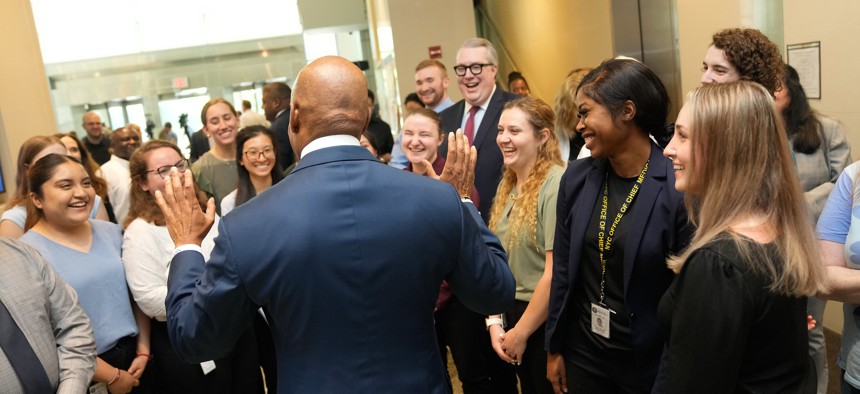Policy
Staffed up gun crime unit gets results, amid NYC government job vacancies
There are tens of thousands of unfilled city positions, under Mayor Eric Adams, but a small unit of the Office of Chief Medical Examiner has hit goals after hiring new employees.

Mayor Eric Adams visited the Office of Chief Medical Examiner on June 26 to tour the turnaround time for testing and analysis of evidence from gun crimes. Michael Appleton/Mayoral Photography Office
As unfilled jobs hamper some city agencies' ability to deliver timely services like food stamps and affordable housing placements, there’s at least one area of New York City Mayor Eric Adams’ government that isn’t facing staffing issues. A year out from when it was first announced, a forensic DNA gun crime unit housed within the Office of Chief Medical Examiner appears to be firing on all cylinders.
The DNA Gun Crimes Unit – touted by Adams as being the first of its kind in the nation – is composed of 24 new forensic scientists who were hired and trained within the past year, plus 38 existing staff members, according to the mayor’s preliminary management report. Building out a forensic team to deal exclusively with gun crimes is one area in which Adams has focused on hiring professional employees, and his efforts appear to be showing some results.
During a Monday press conference, Adams said that the city has delivered on its promise to create a lab that is the fastest in the country at analyzing and testing evidence from gun crimes, having achieved a 28 day turnaround time in May. That’s roughly half the 60 days that the office used to take, according to Adams.
“This means those involved in gun crime cases are being brought to justice faster and we are getting more guns off the street,” Adams said. “We are saying to all those who commit gun crimes, the evidence doesn't lie. Science is coming for you faster than ever.”
Chief Medical Examiner Jason Graham trumpeted the faster testing results as a way to help the criminal justice system resolve cases as swiftly as possible, hastening answers for victims’ loved ones and potentially speeding up perpetrators’ movement through the justice system.
“The investment that the city made in building this gun crimes unit, that is what has taken that turnaround time and reduced it by half,” he said. “The most significant way that we accomplished this was by the infusion of staff. Those 24 scientists who were brought on were trained within the past year and are now actively doing the casework. We did make upgrades to our laboratory-wide systems and we also procured some additional supplies and equipment, but it was primarily the people.”
While the work is still in its early days, the city’s commitment to making sure the unit has the staffing and equipment it needs to meet its ambitious goals aligns with the rhetoric of a mayor who has repeatedly vowed to end gun violence in the city. Still, tens of thousands of city positions remain unfilled. An analysis from New York City Comptroller Brad Lander’s office published in December found that the citywide vacancy rate stood at about 8% as of October 2022, with much deeper numbers in specific agencies like the Department of Small Business Services’ 32% and Housing Preservation and Development’s 18%.
Even the Office of Chief Medical Examiner isn’t fully staffed up. The office has a budgeted headcount of 764 employees, and 725 people were working there late last year, according to the Preliminary Mayor’s Management Report a 5% vacancy rate. That was before City Hall cut 34 unfilled positions from the OCME earlier this year, as part of a citywide vacancy reduction plan to cut the budget.

